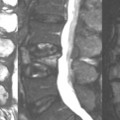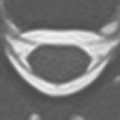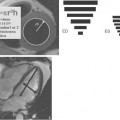15 Fast Spin Echo Imaging
The images illustrated in Fig. 15.1 were acquired using (A) conventional and (B) fast spin echo techniques. The use of fast or turbo spin echo (FSE; TSE) imaging has become routine in MRI today. A spin echo sequence employs a 180° RF pulse (typically) to create the echo, which also corrects for dephasing effects from slight field inhomogeneities and chemical shift. In a conventional spin echo sequence, a phase-encoding gradient of defined amplitude is applied prior to the collection of the echo during readout. The amplitude of the phase-encoding gradient determines the line in k space that will be filled as the echo is sampled. In a conventional spin echo sequence, one line of k space is filled during each repetition (TR period) of the pulse sequence. In an FSE sequence, a series of 180° pulses produces a train of echoes during a single TR period, as illustrated in Fig. 15.2
Stay updated, free articles. Join our Telegram channel

Full access? Get Clinical Tree








